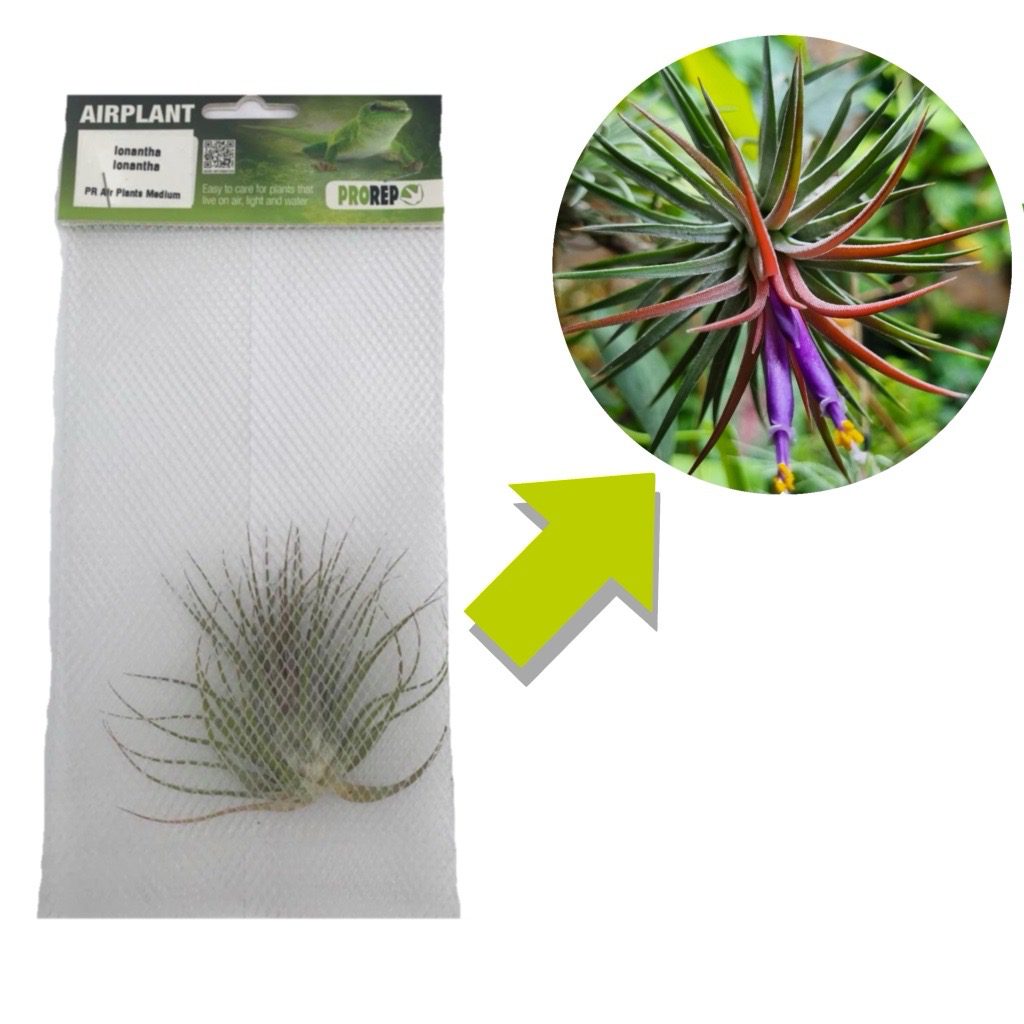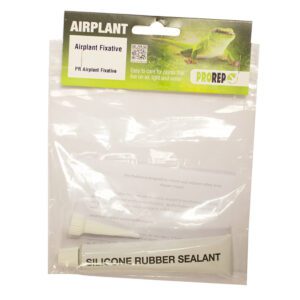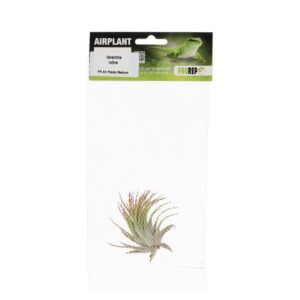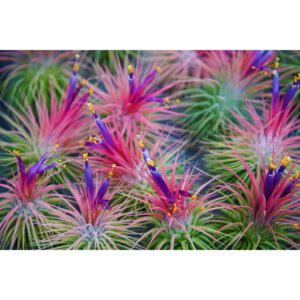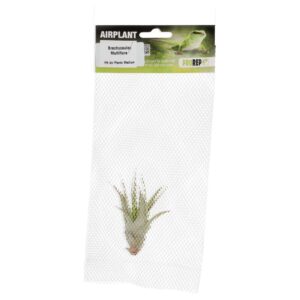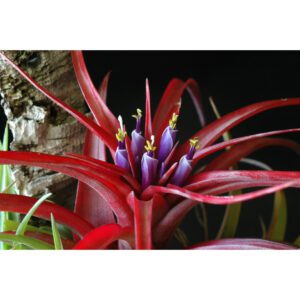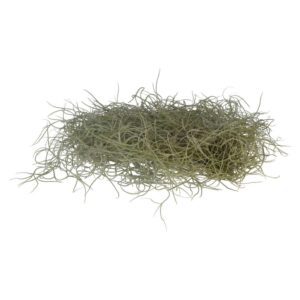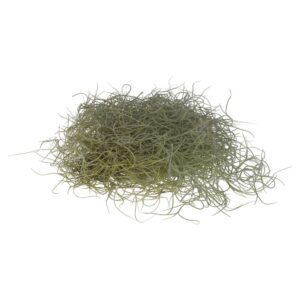Ionantha ionantha
Mature Appearance:
Forms a tight, symmetrical rosette of silvery‐green, recurved leaves roughly 8–10 cm across.
In bright light (or approaching bloom), leaves blush pink or red, especially near the centre.
Flower spike: slender, 5–10 cm tall, bearing violet to purple tubular blooms.
Life Cycle:
Flowering: Typically blooms once after 1–2 years in cultivation.
Pup Production: After blooming, the central rosette produces 2–4 pups at its base.
Mother Decline: The original “mother” plant slowly withers as pups grow; eventually the pups form a new clump and the mother dries away.
Enclosure Use:
Best Fit: Humid, well‐lit arboreal vivaria (e.g., crested gecko, day gecko, or tree frog enclosures).
Mounted on cork bark, driftwood, or attached to mesh in the upper canopy.
Blends into a bromeliad/epiphyte display, offering hide spots and perching sites.
Care:
Light: Bright, indirect (250–500 µmol·m⁻²·s⁻¹). Avoid midday sun.
Humidity: 60–80% RH preferred. Regular misting (2–3×/week) and a weekly 10–15 min soak in room‐temperature water.
Airflow: Good ventilation—an enclosure fan or screen front helps leaves dry within 4–6 hours to prevent rot.
Temperature: 18–28 °C; brief dips to 15 °C are tolerated but avoid prolonged cold.
Overview of Enclosure Placement & Compatibility
Arboreal Reptiles (Geckos, Tree Snakes, Chameleons): Mount mid‐ to upper‐level on cork bark or natural branches—air plants stay dry at leaf tips and provide perches.
Paludariums (Dart Frogs, Newts): Position so bases are above standing water but within mist zones; high humidity helps their growth and stability.
Terrestrial Reptiles (Small Tortoises, Skinks): Generally, avoid placing air plants on floor substrate where they stay too wet. Instead, mount on vertical surfaces.
Nocturnal Reptiles (Crepuscular Geckos, Tree Frogs): Many Tillandsias thrive in lower‐light understory conditions—select varieties like Ionantha scaposa or Brachycaulos multiflora that tolerate moderate light.
Basic Care Tips for All Tillandsias in Reptile Enclosures
Light: Most need bright, indirect light; avoid full midday sun inside a glass vivarium to prevent heat buildup.
Watering:
Misting: Use a fine‐mist sprayer; wet entire plant until beads form on leaves.
Soaking: Remove and soak in dechlorinated, room‐temperature water. For large species (e.g., T. fasciculata), soak 20–30 minutes; smaller ones 10–15 minutes.
Frequency: In a high‐humidity vivarium (≥70% RH), misting 2×/week may suffice. In drier rooms, mist 3–4 times weekly with a weekly soak.
Airflow: Ensure leaves dry within 4–6 hours to prevent rot. Use vent fans or leave enclosure slightly ajar after misting.
Temperature: Most thrive between 18–28 °C. Avoid prolonged humidity with temperatures >30 °C, which can lead to fungal issues.
Fertilizer: Optional: use a bromeliad or tillandsia‐specific foliar fertilizer at ¼ strength once a month during active growth. Rinse thoroughly after to prevent residue.
Mounting & Display:
Attach using fishing line, thin wire, or high‐temp silicone to cork bark, rock, or driftwood. Do not use glue that can leach toxins.
Position so water does not pool in leaf rosettes—provide an angle or slight tilt to assist drainage.
By integrating these air plant species into your reptile vivaria, you create a more natural, three‐dimensional environment—offering climbing surfaces, humidity buffering, and visual interest—while providing minimal maintenance needs. Proper placement, regular but moderate watering, and good airflow will ensure your Tillandsias thrive alongside your reptiles.
SKU: PPA005
PR Airplant Medium Ionantha ionantha
£5.49
Air plants provide long lasting natural decor for terrariums and can be attached to vines, stones, trunks, in fact almost anything for a naturalistic finish.
Additional information
| Brand | ProRep |
|---|



